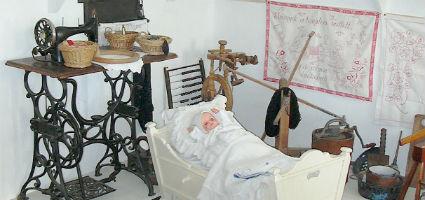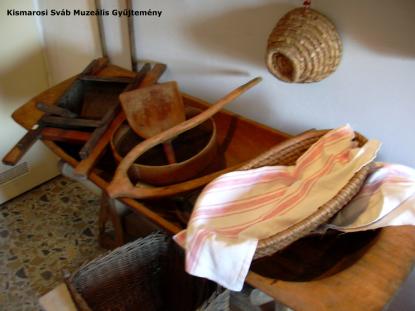2025. July 19. Saturday
Swabian Museal Collection - Kismaros
 |
Address: 2623, Kismaros Kossuth Lajos u. 21.
Phone number: (20) 923-4714
E-mail: akos.daboczi@vnet.hu
Opening hours: *15.03-15.09.: Wed 9-13, Fri 14-18, Sun 8.30-12.30
|
The settlers arrived in Kismaros, in the Danube Bent, at the bottom of the Börzsony, from German speaking areas in the Danube Valley in the first part of the 18th century. The people formed a closed community for long after their arrival. They completely preserved their language until the beginning of the 20th century, partially until 1945. Education was in the languages German and Hungarian.
A permanent exhibition opened in the building of the former people's school called Kismaros Swabian Museal Collection in 1993, the material consisting of documents, photos household equipment used by the German population, laces, cloths for babies, bedclothes etc.
Swabian female folk clothing was also reconstructed to be shown. Devoted Christian people of Kismaros built a church in 1827. Objects from this church alongside various devotional objects, chalices, flags and crosses are in to be seen. There are also old school books, charters in German and Hungarian, sheet music etc.
The visitors can see tools used in agriculture and viniculture. Industrialization began in the region in the 19th century. We show tools used by carpenters, coopers, masons etc.
Photo collection topics: groups of kindergarten and school children, church organized events, scout life, the past and present of agriculture, viniculture, wedding pictures, families from Kismaros.
Photos of women and men who were taken to the USSR in to do force labour called "málenkij robot".
Two publications: 'The Past and Present of Viniculture in Kismaros' and 'Wedding Photos from Kismaros' are available for review on location.
A permanent exhibition opened in the building of the former people's school called Kismaros Swabian Museal Collection in 1993, the material consisting of documents, photos household equipment used by the German population, laces, cloths for babies, bedclothes etc.
Swabian female folk clothing was also reconstructed to be shown. Devoted Christian people of Kismaros built a church in 1827. Objects from this church alongside various devotional objects, chalices, flags and crosses are in to be seen. There are also old school books, charters in German and Hungarian, sheet music etc.
The visitors can see tools used in agriculture and viniculture. Industrialization began in the region in the 19th century. We show tools used by carpenters, coopers, masons etc.
Photo collection topics: groups of kindergarten and school children, church organized events, scout life, the past and present of agriculture, viniculture, wedding pictures, families from Kismaros.
Photos of women and men who were taken to the USSR in to do force labour called "málenkij robot".
Two publications: 'The Past and Present of Viniculture in Kismaros' and 'Wedding Photos from Kismaros' are available for review on location.
